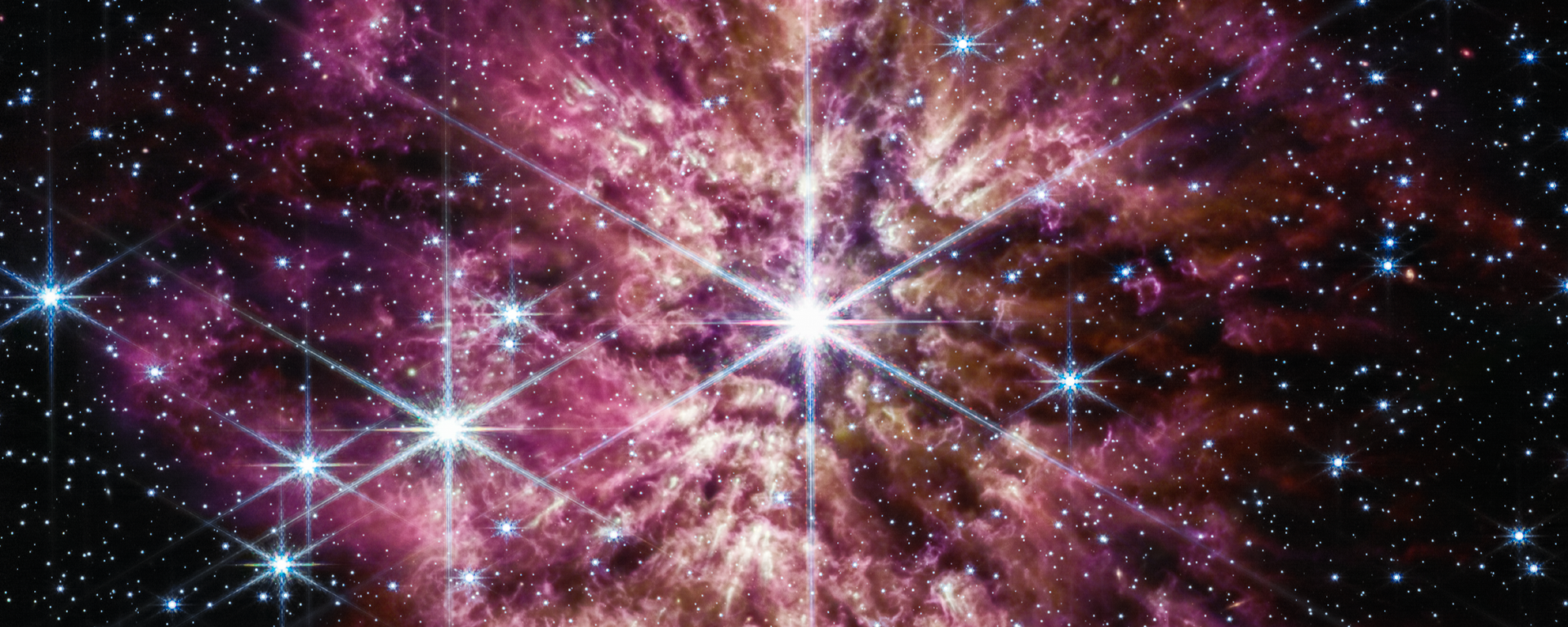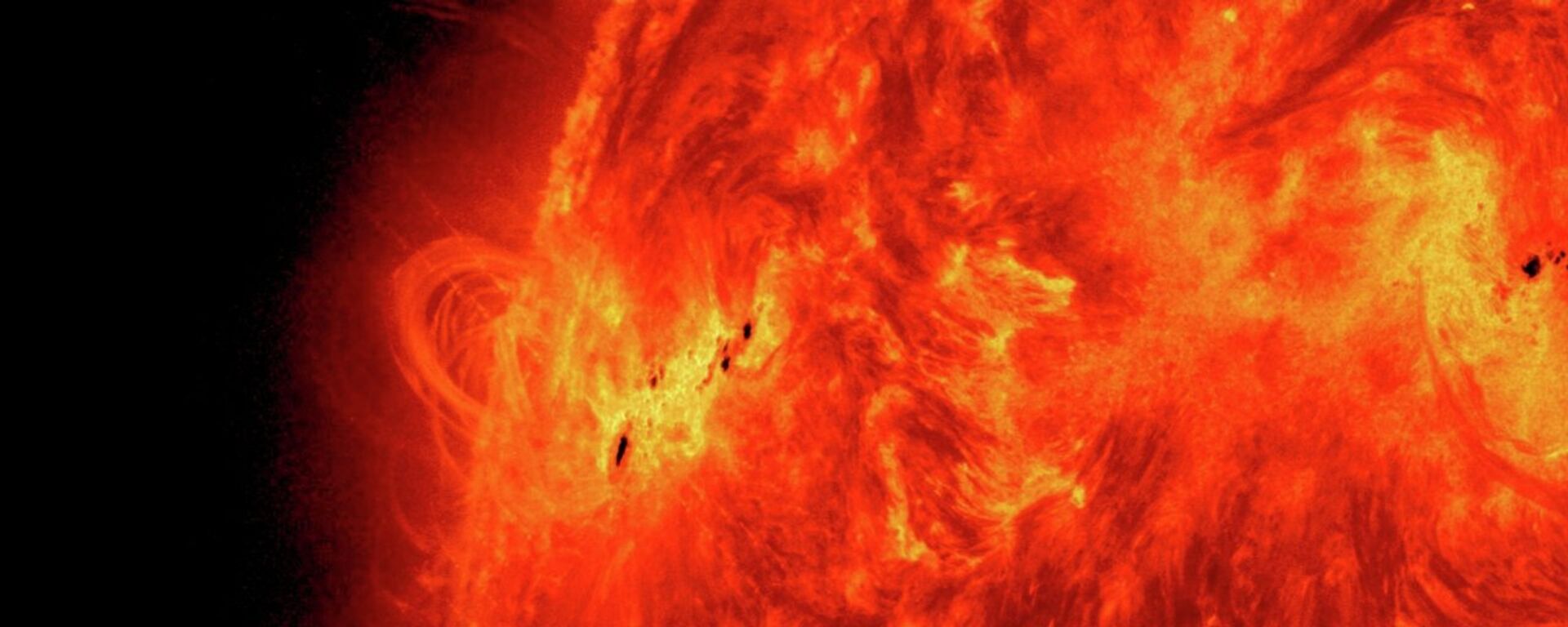https://sputnikglobe.com/20230615/scientists-discover-milky-ways-fastest-runaway-stars-ever-detected-1111197795.html
Scientists Discover Milky Way's Fastest 'Runaway' Stars Ever Detected
Scientists Discover Milky Way's Fastest 'Runaway' Stars Ever Detected
Sputnik International
Al team of astronomers discovered six previously unknown to science 'runaway' stars, two of which have broken the record for the fastest speed of any such object in observational history.
2023-06-15T21:27+0000
2023-06-15T21:27+0000
2023-06-20T17:11+0000
beyond politics
science & tech
harvard-smithsonian center for astrophysics
gaia
space
milky way
space exploration
https://cdn1.img.sputnikglobe.com/img/07e7/06/0f/1111197638_0:20:1025:596_1920x0_80_0_0_50be5c05189bb2cc83a17651440a6938.jpg
Scientists have made an exciting discovery in the Milky Way, identifying six new runaway stars, including two record-breaking stars with velocities faster than any previously observed. These stars, known as hypervelocity stars, are traveling at speeds that exceed the escape velocity of our galaxy.The research team, led by astrophysicist Kareem El-Badry of Harvard-Smithsonian Center for Astrophysics, suggests that all four hypervelocity stars are the result of spectacular Type Ia supernovae. Type Ia supernovae are crucial for measuring the universe as they serve as "standard candles."The findings of this study have enabled researchers to calculate the rate at which these stars are born, and they have determined it aligns with the estimated rate of Type Ia supernovae. However, scientists note that there may still be a significant population of fainter low-mass runaway stars yet to be discovered.The researchers utilized data from the Gaia survey, a project mapping the Milky Way with exceptional precision, to identify four previously unknown hypervelocity stars with a D6 origin. Combining these findings with 10 previously identified hypervelocity stars, they were able to estimate the number of such stars in our galaxy more accurately.They also suggest there may be hypervelocity stars originating from other galaxies present in the Milky Way.While there are faster stars in the galaxy, such as those orbiting the supermassive black hole at the galactic center, these stars are gravitationally bound and unlikely to leave the galaxy. The fastest runaway star previously known had a velocity of around 2,200 kilometers per second, but the newly discovered stars, J0927 and J1235, boast velocities of 2,285 and 1,694 kilometers per second, respectively.By studying these stars, scientists aim to determine the birth rate of hypervelocity runaway white dwarfs and gain insights into the formation of Type Ia supernovae through the double-degenerate channel. Further modeling and analysis are required to refine estimates and comprehend the thermal evolution of these stars fully.The findings of the study are available on the arXiv preprint server.
https://sputnikglobe.com/20230615/researchers-discover-chemical-traces-of-universes-first-stars-1111168369.html
https://sputnikglobe.com/20230523/stunning-new-images-of-the-sun-released-1110529092.html
Sputnik International
feedback@sputniknews.com
+74956456601
MIA „Rossiya Segodnya“
2023
News
en_EN
Sputnik International
feedback@sputniknews.com
+74956456601
MIA „Rossiya Segodnya“
Sputnik International
feedback@sputniknews.com
+74956456601
MIA „Rossiya Segodnya“
milky way, runaway stars, can stars move, what is speed of star, type ia supernovae, hypervelocity star, j0927 j1235, chandrasekhar limit
milky way, runaway stars, can stars move, what is speed of star, type ia supernovae, hypervelocity star, j0927 j1235, chandrasekhar limit
Scientists Discover Milky Way's Fastest 'Runaway' Stars Ever Detected
21:27 GMT 15.06.2023 (Updated: 17:11 GMT 20.06.2023) An international team of astronomers has discovered six previously unknown 'runaway' stars. Until recently, only 10 such stars were known. Their trajectories and speed will allow them to leave our Milky Way galaxy one day.
Scientists have made an exciting discovery in the Milky Way, identifying six new runaway stars, including two record-breaking stars with velocities faster than any previously observed.
These stars, known as hypervelocity stars, are traveling at speeds that exceed the escape velocity of our galaxy.
The research team, led by astrophysicist Kareem El-Badry of Harvard-Smithsonian Center for Astrophysics, suggests that all four hypervelocity stars are the result of spectacular Type Ia supernovae. Type Ia supernovae are crucial for measuring the universe as they serve as "standard candles."
The findings of this study have enabled researchers to calculate the rate at which these stars are born, and they have determined it aligns with the estimated rate of Type Ia supernovae. However, scientists note that there may still be a significant population of fainter low-mass runaway stars yet to be discovered.
Hypervelocity stars are believed to be produced by a specific type of supernova called the dynamically driven double-degenerate double-detonation (D6) supernova.
This process involves a binary system consisting of two white dwarf stars. If the white dwarf pulls material from its companion star, it can become more massive and eventually reach the critical mass known as the Chandrasekhar limit, causing a Type Ia supernova.
The researchers utilized data from the Gaia survey, a project mapping the Milky Way with exceptional precision, to identify four previously unknown hypervelocity stars with a D6 origin. Combining these findings with 10 previously identified hypervelocity stars, they were able to estimate the number of such stars in our galaxy more accurately.
They also suggest there may be hypervelocity stars originating from other galaxies present in the Milky Way.
While there are faster stars in the galaxy, such as those orbiting the supermassive black hole at the galactic center, these stars are gravitationally bound and unlikely to leave the galaxy.
The fastest runaway star previously known had a velocity of around 2,200 kilometers per second, but the newly discovered stars, J0927 and J1235, boast velocities of 2,285 and 1,694 kilometers per second, respectively.
By studying these stars, scientists aim to determine the birth rate of hypervelocity runaway white dwarfs and gain insights into the formation of Type Ia supernovae through the double-degenerate channel. Further modeling and analysis are required to refine estimates and comprehend the thermal evolution of these stars fully.
The findings of the study are available on the
arXiv preprint server.




